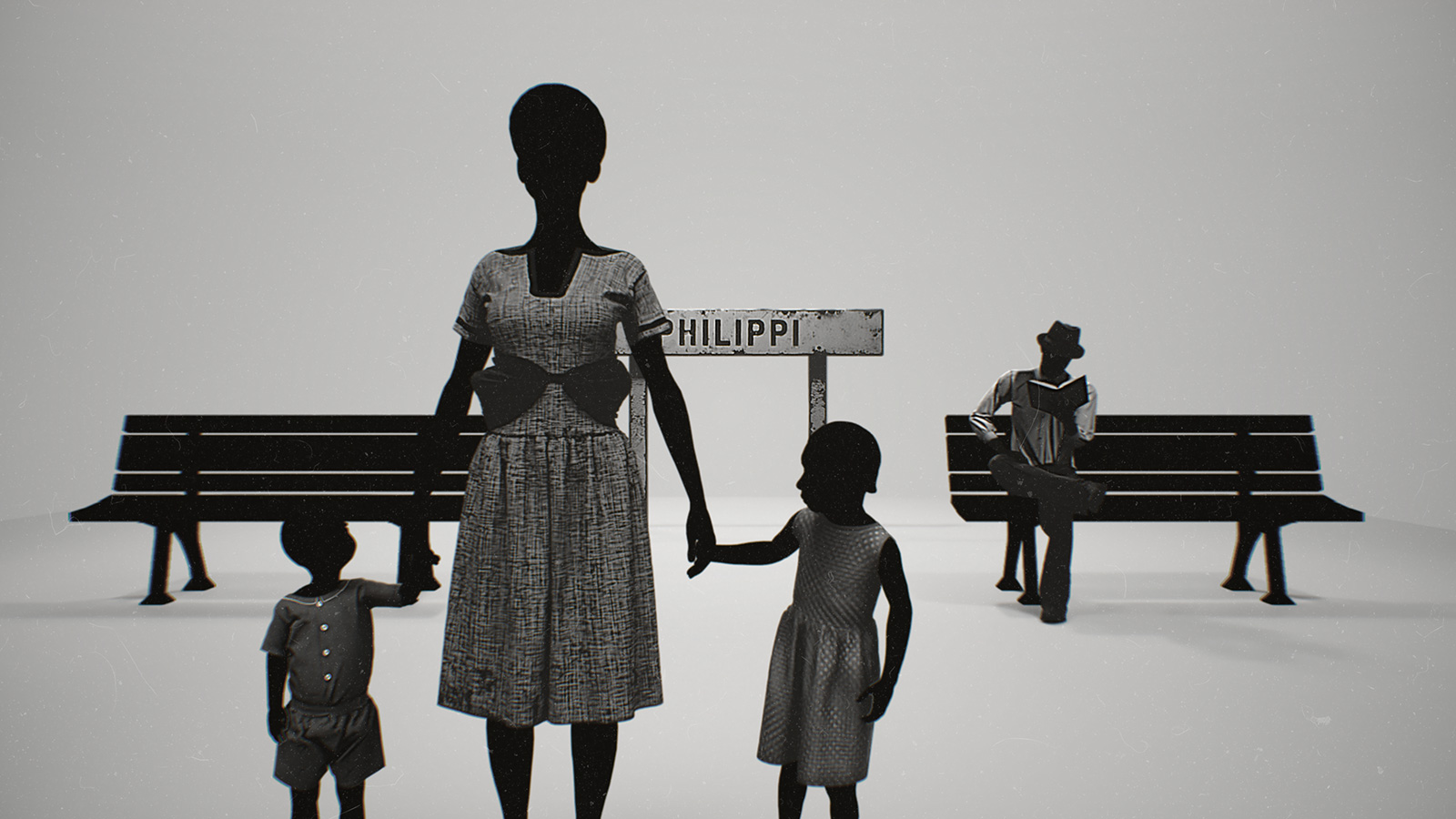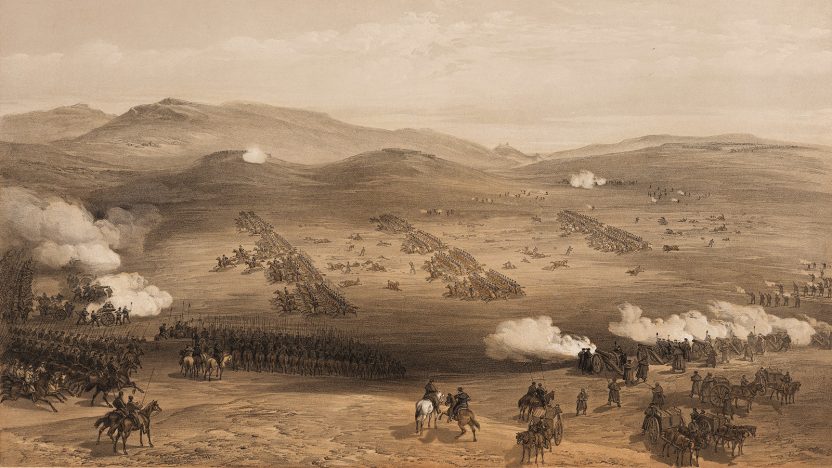
Against identity
Sometimes identity is “negative,” in that it is defined by what someone (or something) is not. And that can be a powerful catalyst for the opening of harmful doors
by Francesca Coin
Lebohang Kganye, Tell Tale, 2018. Film, Photo, Installation / Shadows of Re-Memory, Film 2021
We start talking about identity when all other forms of dialogue seem to have lost their edge: when the future looks so unpredictable that identity seems to be the only factor capable of re-establishing order in human life. But what do we mean by identity? In his Imagined Communities (2018), Benedict Anderson noted that the fall of the Berlin Wall was triggering a resurgence of nationalism rather than of forgetting it. Back in the late ’80s, for Anderson, nationalism was resurfacing due to the weight of capitalism and its crises. For Anderson, national identity exists and is constantly revived as a retrotopia, a ghost of the past, and a nostalgic horizon. It occurred during the Brexit and for Donald Trump’s America, when the impotence of the present was comforted by the idea of rebuilding walls and iron curtains a few short years after celebrating their demise. It happened in Italy with Giorgia Meloni and in France with Marine Le Pen, when two women stood as symbols of motherhood, the imperial past, religion, and family.
In recent decades, the debate on identity has become increasingly rich and simultaneously more problematic. In Oneself as Another (1986), Paul Ricœur had tried one last great attempt to synthesize the concept of identity, combining continental and English-speaking grammars to yield the very successful concept of narrative identity, which brought together all the masters of suspicion and attempted to recast all the twentieth-century crises:
from Nietzsche to Foucault on the one hand, from Hume’s disciples to Parfit on the other. It is a creative and noble concept that stretches the concept of mutable identity to its almost oxymoronic limit, shifting the linguistic, historical, philosophical—and therefore ideological and political—weight onto sameness instead of selfhood. On the other hand, wrote Ricœur in 1986, the wall is still standing, and one cannot imagine its collapse nor the consequences.

Lebohang Kganye, Tell Tale, 2018. Film, Photo, Installation / Shadows of Re-Memory, Film 2021
But when the wall crumbled, the mirror and all the illusions it carried with it seemed to crumble as well. In 1995, Ugo Fabietti published L’identità etnica (Ethnic Identity). In 1996, Jean François Bayart’s L’illusion identitarie was issued. Both publications were unable to reflect on the same imaginary without considering the blood that still flows in Yugoslavia or Rwanda. The alarms that an identitarian ideology, with its rhetoric of authenticity or tradition or purity, could lead at the political level almost only to massacres. Beyond the concentration camps in the center of Europe, the genocide in Rwanda can also be interpreted in the light of a conflict between two inventions of identities, when passing directly from the cultural level to the political one and to the military solution.
Identity is a dangerous word, writes Tony Judt. Identity is a violent word, noted Amartya Sen. Identity is predatory, according to Arian Appadurai. Identity is murderous, says Amin Maalouf. The question we can raise is powerful: why does such a tenuous invention, with such fragile foundations, endure throughout history? Why is identity anxiety increasingly strong, as if there is “an urgency of identity,” even if this identity leads to massacre? Or yet: how much damage can forced modernization and bureaucratization do to a world that simply can’t fit within the categories that are perhaps optimal for its richest and most industrialized part? How literally bloodthirsty can an identity card be?
Why is identity anxiety increasingly strong, as if there is “an urgency of identity,” even if this identity leads to massacre?
It is very difficult to get rid of a historical prejudice such as that of identity. To this day, some even enhance it, inventing other meta-historical entities such as the West struggling against the Arab-Islamic world. In the same year of Bayart’s L’Illusion identitarie, Samuel H. Huntington published The Clash of Civilizations (2000).
After 9/11, the debate on identity also includes those who—at the head of the world’s militarily most powerful nations—declare planet-wide wars to export democracy. In his autobiography Interesting Times (2002), Eric Hobsbawm—the man and the historian who thought up the concept of the invention of tradition—expresses himself clearly against an epistemic adversary that he had fought throughout a large part of his research career. From his hospital bed, he wrote the last chapter of Interesting Times, as a nearly centenarian who was born in Alexandria in 1917 and had been through countless historical phases and hundreds of different cities (2002):
“An identity is defined against someone else; it implies not identifying with the other. It leads to disaster. That is exactly why in-group history, written only for the group (‘identity history’)—black history for blacks, queer history for homosexuals, feminist history for women only, or any kind of in-group ethnic or nationalist history—cannot be satisfactory as history, even when it is more than a politically slanted version of an ideological sub-section of the wider identity group. No identity group, however large, is alone in the world; the world cannot be changed to suit it alone, nor can the past.”

Lebohang Kganye, Tell Tale, 2018. Film, Photo, Installation / Shadows of Re-Memory, Film 2021
Hobsbawm fully realizes that identity essentialism leads to massacres and conflict. Still, in a 1996 article, he dismissed identity history as an invention even more recent than his Age of Extremes (1914-1991):
“We have become so used to terms like ‘collective identity,’ ‘identity groups, ‘identity politics,’ or, for that matter, ‘ethnicity,’ that it is hard to remember how recently they have surfaced as part of the current vocabulary, or jargon, of political discourse. For instance, if you look at the International Encyclopedia of the Social Sciences, which was published in 1968—that is to say, written in the mid ’60s—you will find no entry under identity except one about psychosocial identity, by Erik Erikson, who dealt chiefly with such things as the so-called ‘identity crisis’ of adolescents who are trying to discover what they are, and a general piece on voters’ identification. And as for ethnicity, in the Oxford English Dictionary of the early 1970s, it still occurs only as a rare word indicating ‘heathendom and heathen superstition’ and documented by quotations from the eighteenth century.”
The attacks on this identitarianism by sociologists, philologists, anthropologists, and historians, even challenging their own academic fields, have increased considerably, either because of the implicitly aggressive nature of this concept or because of its inconsistency. Yet, if we do away with identity, what is left? Isn’t there a danger that identity anxiety could lead to new affiliations that could be even more dangerous? Is identity a destiny? Can we do without identity? Can we free ourselves from it? Can we free ourselves from its bonds? From its constraints, from its mystifications?
“We have become so used to terms like ‘collective identity,’ ‘identity groups, ‘identity politics,’ or, for that matter, ‘ethnicity,’ that it is hard to remember how recently they have surfaced as part of the current vocabulary, or jargon, of political discourse.”
As a matter of fact, to escape from the identity paradigm, we must confront ourselves with an updated feminist, postcolonialist, southernist bibliography, at least, that leads us to a deconstruction of the identity productions linked to the mechanisms of power. We need to observe ourselves from the outside, in the ambivalent sense of this expression. In other words, it is not enough to be self-critical with respect to the privilege of one’s own observatory. We must explore other constructions of identity, or alternative constructions, which sometimes describe what some communities are afraid of being. In the introduction to Italy’s Margins (2015), David Forgacs wrote:
“Could it be that a nation’s most intimate identity, its unconscious or unacknowledged identity and not just its publicly acknowledged one, is formed also by the groups that it defines as marginal or fails to assimilate and not just by those whom it willingly and gladly incorporates?”

Lebohang Kganye, Tell Tale, 2018. Film, Photo, Installation / Shadows of Re-Memory, Film 2021
His book, published after the celebrations of the unification of Italy, became a beacon that shed a different light on the rhetoric of patriotic revival. If identity is a defining term that includes and excludes, we must focus on the margins to define what is included or not in this definition. It is no coincidence that Italy’s Margins is a historical overview of the suburbs of major cities in the years following unification, the East African colonies in the 1930s, the backward areas of the South in the 1950s, the psychiatric hospitals before the reforms of the 1970s and the nomadic camps in the 2000s.
“Could it be that a nation’s most intimate identity, its unconscious or unacknowledged identity and not just its publicly acknowledged one, is formed also by the groups that it defines as marginal or fails to assimilate and not just by those whom it willingly and gladly incorporates?”
Forgacs’ perspective is indeed one of exploration (and thus cannot also be in part a “construction”) of the margin as opposed to a central identity. Thus, the cultural hegemony and political power that mutually feed and are fed by the devices of exclusion and marginalization enable us to consider the anxieties of our times, rather than its armor and defenses. The lesson of Southern Italianism, especially by way of Gramsci, allows us to reconsider, as has also been the case in postcolonial studies, an imperial narrative that risks being introjected and replicated with its own symbolic violence. Indeed, through this reversal, the idea of identity lets us show the axes of oppression that have used identity to exclude and cloak in silence the speech of those who were oppressed, to remind us that the history of peoples in the present and future is increasingly a history of movements and diasporas. Tying cultural and national identities to territories is not only a regressive political perspective, but it is an increasingly gross hermeneutic error.


